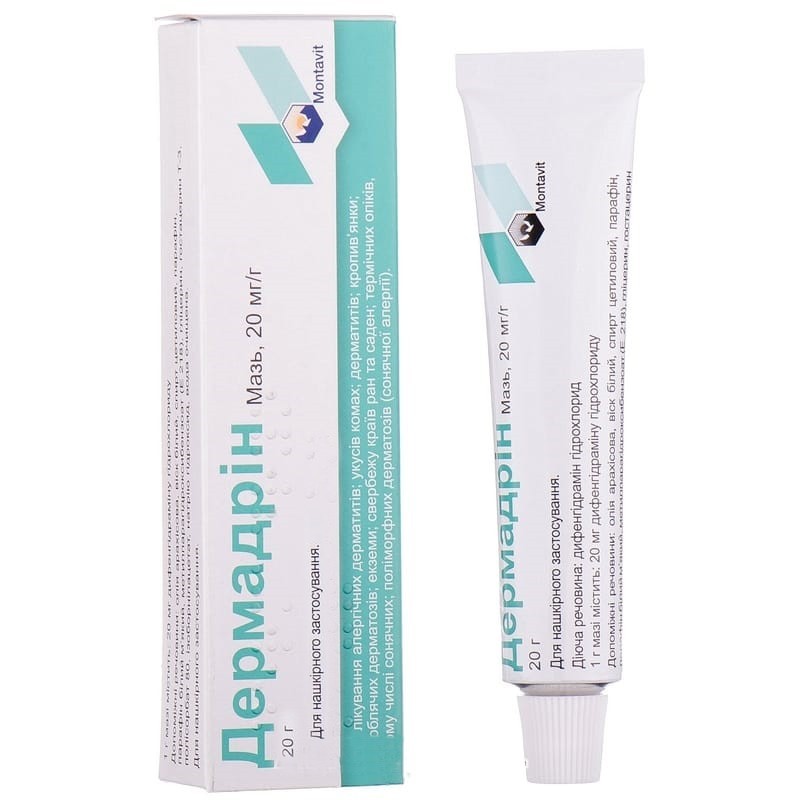



 Secure and encrypted payment processing
Secure and encrypted payment processing We ship to over 40 countries including the USA, UK, Europe, Australia and Japan
We ship to over 40 countries including the USA, UK, Europe, Australia and Japan Guaranteed refund or reship if you haven't received your order
Guaranteed refund or reship if you haven't received your orderdermadrin contains diphenhydramine, an N1 receptor blocker that selectively inhibits histamine n1 receptors. diphenhydramine is an effective antihistamine that eliminates allergies and itching; additionally has a local anesthetic and analgesic effect. effectively eliminates swelling and irritation after insect and bee stings, with sun and thermal burns, photodermatosis. the basis of the ointment is a water-in-oil emulsion, which determines the cooling effect of the drug. when applied topically, the active substance of the ointment penetrates the skin and subcutaneous layers. antipruritic and analgesic effect occurs immediately after applying the ointment and lasts 2-6 hours.
Pharmacokinetics After application to the skin, the therapeutically effective concentration is stored directly at the site of application. The amount of diphenhydramine that is absorbed through the skin is directly proportional to the size of the area of application and the period of contact with the skin of the ointment Dermadrin. When diphenhydramine is absorbed through the skin, the systemic effect of the drug is absent.
Allergic dermatitis; itchy dermatosis; dermatitis with local pain manifestations; hives; eczema; insect bites; thermal and sunburn of the first degree; photodermatosis (sun allergy).
Outwardly on the skin. depending on the size of the lesion, it is recommended to apply in an amount from the size of the cherry to the walnut, which is 1-3 g.
Adults: apply 4-6 times a day. Children aged 2–12 years: 4–5 times a day. It is not recommended to use more than 15 g of Dermadrin ointment per day. The duration of treatment depends on the degree of damage.
Hypersensitivity to diphenhydramine hydrochloride or to other antihistamines; age up to 2 years. Dermadrin ointment is not recommended to be applied to open wounds and to large areas of affected skin, especially with varicose veins, measles, vesicular skin lesions.
In general, dermadrine ointment is well tolerated. nevertheless, the possibility of developing hypersensitivity reactions is not ruled out.
Avoid contact with eyes. due to the possibility of developing photosensitivity reactions, direct sunlight should be avoided on areas of the skin on which dermadrine ointment is applied.
Use during pregnancy and lactation
Dermadrin ointment is not recommended for use in the first trimester of pregnancy. Caution should be used in the II and III trimester of pregnancy. During breastfeeding, it should be remembered that the active substance of diphenhydramine hydrochloride ointment can get into the mother’s milk.
Before using the drug during pregnancy and lactation, consult your doctor!
The ability to influence the management of vehicles and work with mechanisms. The drug does not affect the ability to drive vehicles and work with mechanisms. Does not affect the psychophysical state and does not cause drowsiness.
Not identified.
Not noted; when applying ointment dermadrin locally, the likelihood of an overdose is practically absent.
In a dark place at temperatures up to 25 ° C.